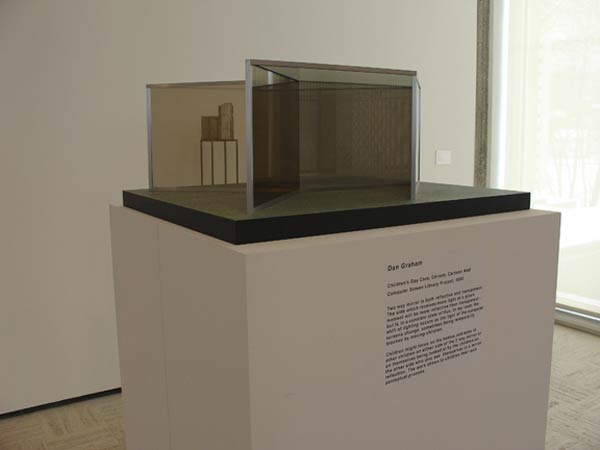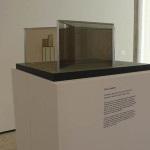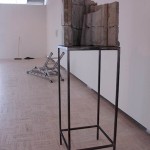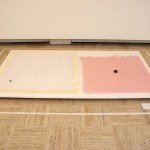By SCOTT ALBERG
Broken Home 1997/2007 at the Rose Art Museum is a provocative re-exhibition of a 1997 show of the same name held at the Green Naftali Gallery in New York City. The Rose's exhibition brochure points out that Broken Home was a guest curated (by Meg O'Rourke and Caroline Schneider) show of "museum quality", that is, a show that brought together a wide range of work by very important artists around a theme of art historical importance. The practice of commercial galleries mounting shows with art historical ambitions, as opposed to just the traditional solo shows of artists in their own stable, is becoming more and more common within the art world, and has been met with a great deal of enthusiasm and critical praise. Though not all of the works from the original exhibition could be borrowed for the current version of Broken Home, the Rose has managed to pull together a solid grouping of work that maintains the original exhibition's concerns with the Freudian uncanny as it relates to architecture and notions of home. Included in the exhibition are such artists as Mike Kelley, Isa Genzken, Felix Gonzales Torres, Dan Graham, Robert Gober, amongst others.
The art in the show is of high quality, and if nothing else, makes a wonderful survey of a certain moment in 90's art that saw a turn away from work of an overtly political nature toward work focused more on personal experience, both physical and psychic. But the kernel of this exhibition's raison d'etre is not so much to historicize mid to late 90s art but instead to re-present the original exhibition itself. In a polemical curatorial gesture, Broken Home, v.1997, is treated by the Rose as a found or "ready-made" exhibition. Finding itself re-exhibited within the context of a museum in 2008, the current Broken Home is able to ask repressed and lurking questions regarding the current status and roles of museums, galleries, and curators in the face of the increasing hegemony of market forces. What is the effect of art market forces and the commercial gallery world on the curatorial practices of museums? What is the relationship between commerce and canonization?
Of course there is no way the current exhibition at the Rose could really answer any of these questions, but the curatorial gesture manifests the significant shift that is currently occurring where commercial galleries are beginning to self-consciously take on the historicization of a current or art historical moment, traditionally the task of the museum. "Museum-quality" shows have been so well received I suspect partially because they do not attempt to hide or repress the figure of the market within their telling of art history. These art historical surveys are sited within a commercial gallery and most of the work is for sale. There is something about the market's foregrounded implication in the history of art that is a little more of the complete story, a little more real and historically precise, than what we are used to seeing at a museum. The role of the market is rarely brought to bear on the significance of artworks and movements exhibited and canonized within the museum, which typically prefers to describe and contextualize their study of objects of modern art through the lens of avant-garde iconoclasm or self-referential, medium specific style change. It is implied by the Rose's presentation that the traditional posture of museums as autonomous from the market risks rendering them ahistorical and irrelevant.
What Broken Home 1997/2007 brings to the surface is the extent to which the market has been repressed as a significant, productive force in the creation and interpretation of artworks considered by many to have great import. The Rose should be applauded for mounting this kind of a show. It is without irony that the Rose chose Broken Home as the exhibition through which to stage this provocation from. Its main theme is the uncanny, the Freudian concept where something is at the same time both familiar, yet strange. An uncanny object is one that solicits identification and attraction, yet disgusts, or at least makes one uncomfortable, at the same time. And it can be said that when the commodity status of artwork emerges within the context of the museum it does so with uncanny affect.
- Dan Graham. Serpentine II. 1997. Courtesy of Marian Goodman Gallery, NY
- Isa Genzken. Welle. 1988. Private collection, NY, courtesy of David Zwirner Gallery
- Mike Kelley. Untitled Floor Object. 1992. Private Collection, Courtesy of marc jancou contemporary, NY
Rose Art Museum, Brandeis University
"Broken Home 1997/2007" is on view January 24 - April 13, 2008 at The Rose Art Museum.
All images are courtesy of the Rose Art Museum at Brandeis University.







